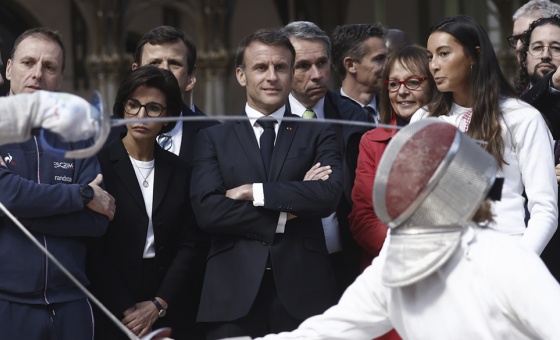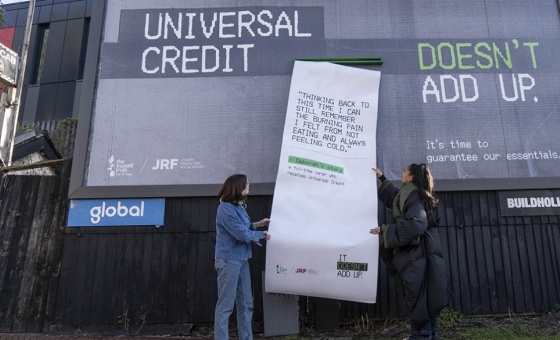This is the last article you can read this month
You can read more article this month
You can read more articles this month
Sorry your limit is up for this month
Reset on:
Please help support the Morning Star by subscribing here
THE much-discussed and sometimes ridiculed Marxist theory of the tendency of the rate of profit to fall has come into its own.
The historic low interest rates are testimony to its validity; ultra-low interest rates are recognition of ultra-low rates of profit.
The theory is dazzling in its simplicity. The rate of profit is the ratio of profit divided by capital expenditure also known as capital stock.
While there is no physical limits to the quantity of the capital that may be invested in any particular business, there is a physical limit to the amount of value (profit) that a worker can produce over and above what is needed in the form of wages for the worker to survive in a healthy enough state to continue to work and to bring up a family of future workers.
With advances in technology, production processes and robotics, the denominator, invested capital continues to rise forcing the rate of profit to fall.
For instance, in the UK, between 1975 and 1979, capital stock for non-financial corporations went up by 609 per cent (sixfold). During the same period, profits increases by 472 per cent (ONS figures), a smaller proportion than the rise in capital stock.
A fall in the rate of profit by itself does not push capitalism into a crisis for capitalists are only interested in the bottom line and not how it was arrived at.
Profits can rise even when the rate of profit is falling provided capital investment increases by a larger proportion than the fall in the profit rate.
However, the relenting pressure on the rate of profit to fall has an eroding effect, it chips away at the very foundation of a system whose raison d’etre is to make a profit.
Globalisation was the antidote to the falling rate of profit. Capital fled as corporations pursued the tiniest profit margin with the zeal of a predator, stretching supply lines across continents and shipping commodities halfway across the globe and, in the process, wreaking havoc on the environment.
At pain of exclusion and punishment backed by World Trade Organisation (WTO) rules, it forced nations to abandon their sovereignty and open their economies to exploitation and their resources to plunder by global corporations.
The combination of cheap labour power, lax health and safety regulations, inadequate labour protection laws and low corporate tax allowed corporations to cut their capital outlay which help to partially mitigate against the pressure on the rate of profit.
For a while, everything looked rosy so much so that Gordon Brown, chancellor of the Exchequer in the Blair government, announced the end of boom and bust.
Then came the 2008 financial crash.
The 2008 financial crisis panicked governments into taking drastic measures to shore up the failing financial system: historic levels of government borrowing and money creation known as quantitative easing on a vast scale.
These were coupled with ultra-low, sometimes sub-zero, interest rates to encourage private investment. None proved very effective.
Japan is a case in point. Japan’s economy has been in the doldrums for three decades; its problems predate the 2008 financial crisis.
In 2013, Prime Minister Shinzo Abe embarked on new monetary and fiscal policies to revive Japan’s dormant economy.
So novel were they, they were dubbed Abenomics: high deficit spending (relative to its size, Japan’s overall debt load is considerably higher than any other Western country), very low interest rates (negative since the start of 2016) and an unprecedented amount of quantitative easing.
Yet the actual economic effects have been meagre: Japan’s growth remains sluggish and inflation is perpetually stuck below the target that Bank of Japan officials want to hit.
You can take a horse to water, but you can’t make it drink; so it is with private investment.
You can make interest rates ultra-low, but you can’t make the capitalists borrow and invest if rates of profit are even lower.
Interest is the portion of profit that a capitalist hands over to the money lender in return for borrowing his money.
The amount is determined by the rate of interest. When it is high, the lender gets a larger proportion of the profit, and when it is low, he gets a smaller portion.
However, the interest cannot exceed the rate of profit itself. Thus, as the rate of profit falls, interest rates inevitably follow and there comes a time when the rate of profit is so low that it leaves very little headroom for the rate of interest to lift its head above zero, making money lending unprofitable and restricting growth.
In an attempt to revive private investment, central banks resort to negative interest rates, to augment profits.
At zero rates of interest, the capitalist gets to keep all of his profit; none goes to the money lender.
When the rate of interest dips below zero, the process is reversed: the money lender hands money over to the borrower, turning capitalism on its head; a sort of topsy-turvy capitalism.
The capitalist gets to keep all the profits and, on top of that, he is rewarded with a top-up.
This does not change the rate of profit, it merely augments private profits. And where does that top-up come from? Where else but from workers? And this is how.
Normally, commercial banks charge the capitalist borrower interest on his borrowing while they pay interest to savers.
Since the latter is smaller than the former, the banks make a profit.
With negative interest rates, commercial banks charge savers and pay borrowers, and with the vast majority of savers being workers, money flows from the working class to the capitalist class — a retrospective exploitation of workers, a second layer of exploitation.
The pandemic, itself a consequence of globalisation, has aggravated the crisis.
More money was borrowed by the government, the Bank of England bought a quarter of the national debt and quantitative easing went through the roof and interest rates sunk to historically low levels with negative interest rates being seriously considered.
Ever since its birth, the working class had had to struggle against constant attacks on its health, pay and conditions of work.
Resistance became a way of life. But perpetual defence leads to perpetual subjugation and it’s time to change tack and begin to delve into matters that workers have traditionally shied away from — issues such as monetary policy, government deficit and the national debt regarded as too complex for workers to comprehend — and start to ask some searching question chief among them is the status of the Bank of England.
Should the Bank of England remain independent or should it be brought back into public ownership as did the Attlee government soon after taking office in 1945?
Established in 1694 when King William III needed money to fight Louis XIV of France, the Bank of England was given the sole right to issue notes in 1844.
Recognising its central role in the economy, the Attlee government nationalised it in 1946.
However, this was reversed in 1979 when the globalisation-loving Blair government made it independent.
Just as public utilities like rail, water and energy should be publicly owned and publicly controlled, so should the central bank.
By bringing the Bank of England back under public control with a public interest remit, the role the private sector plays in the allocation of the nation’s wealth and resources can be diminished.
Fawzi Ibrahim is author of Capitalism versus Planet Earth, an Irreconcilable Conflict.









